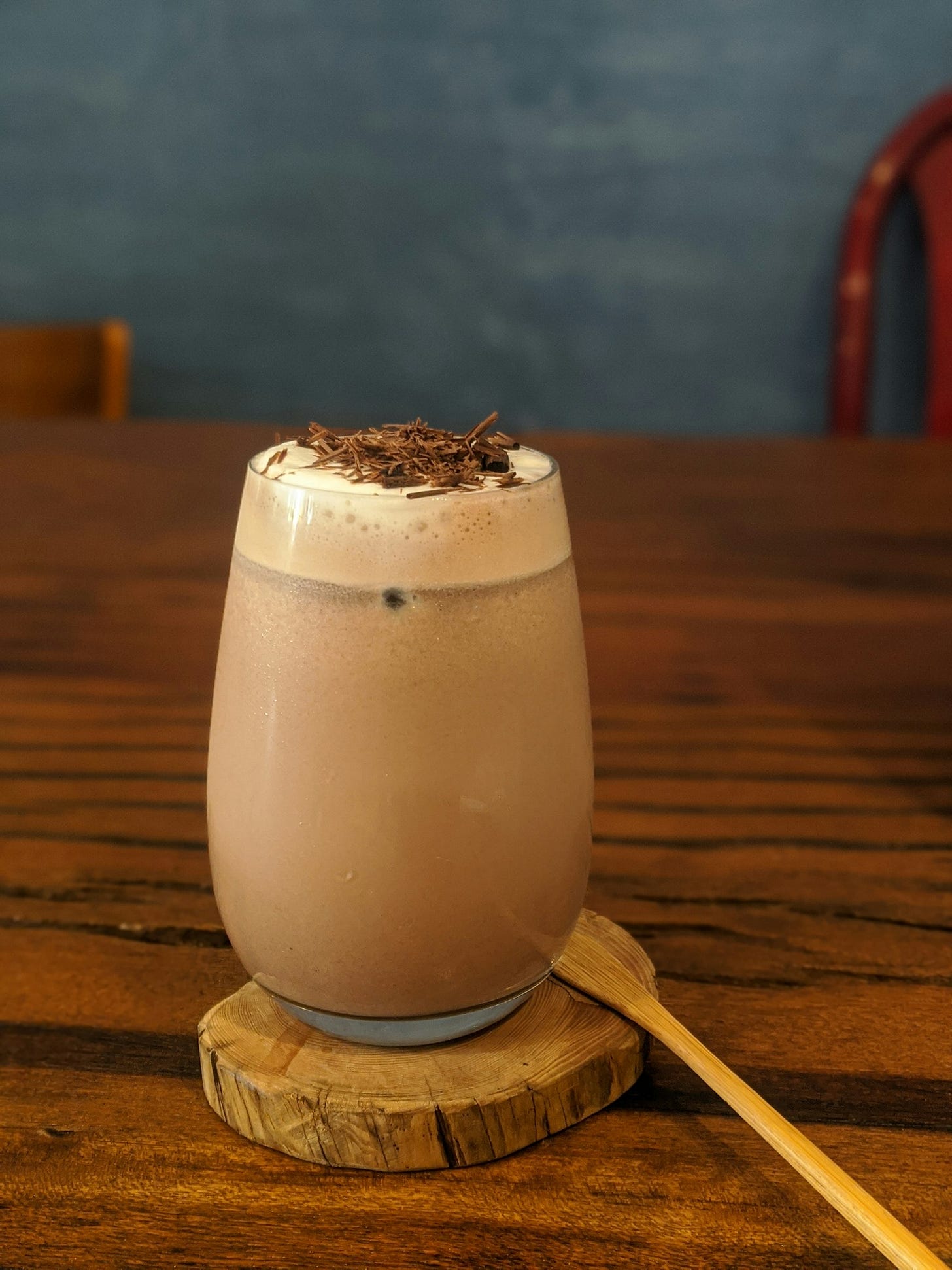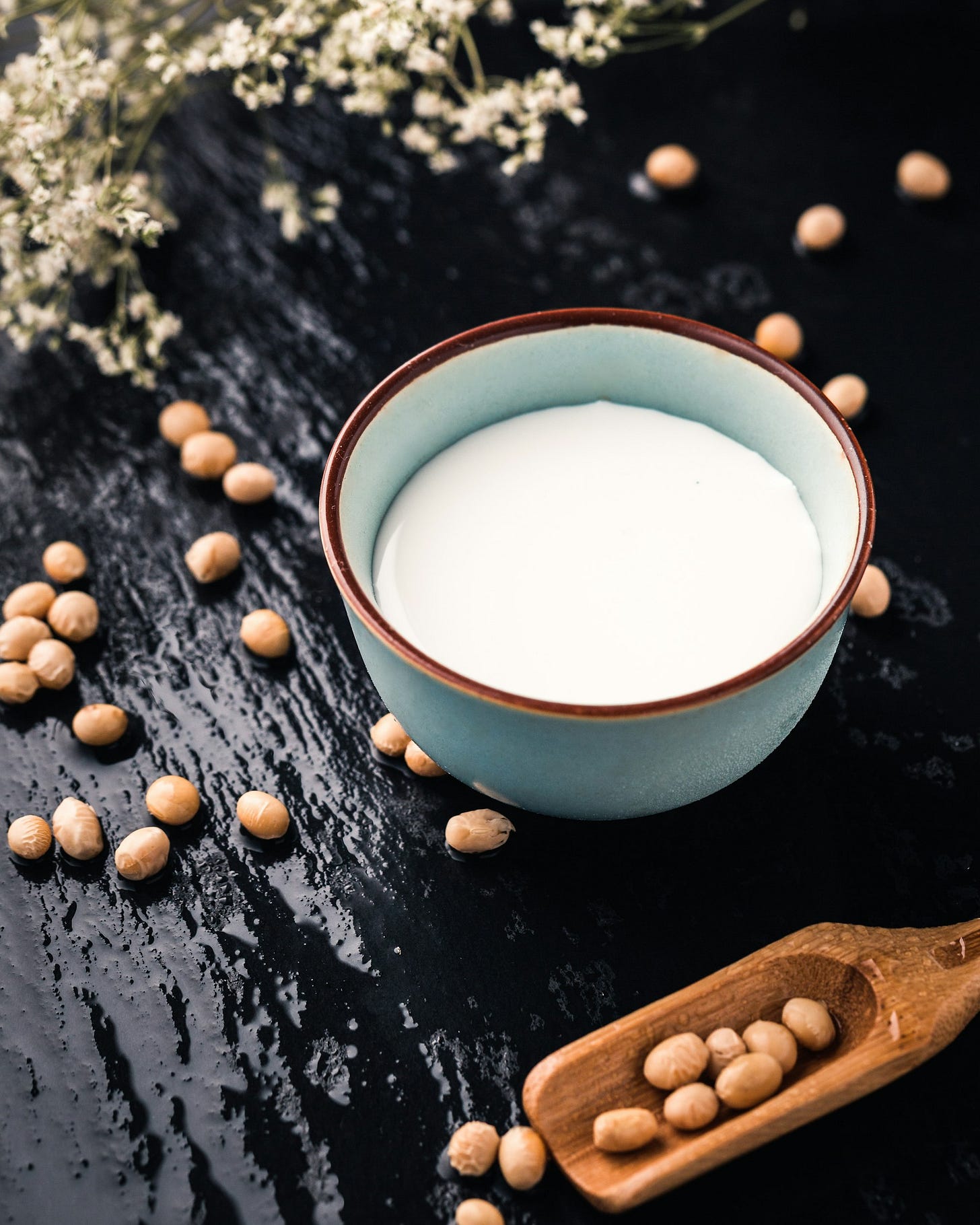I tried… different kinds of milk

Why milk?
Milk isn’t something people usually give a lot of thought to (unless your vegan/lactose-intolerant). Milk is a staple in almost everyone’s diet, a go-to breakfast option for many, and a great base for many recipes. But like the others, there are also many options here, and depending on your goals, dietary restrictions or just to try new things you may want to give some other types of milk a try. It’s a good source of calcium, vitamin D, and other good stuff. It is a great addition to your diet if done right.
What are my options?

Options here can be split into a few categories like your traditional milk from cows, nut-based milk, and miscellaneous kinds of milk. If you’re a vegan you may choose from the latter options. If you’re lactose intolerant, however, you’ve got a few more options. So let’s jump in, starting from your traditional milk options.
Whole milk

Here, whole means that this milk hasn’t been modified to reduce the fat content, unlike its allies. This is the real deal with all the goodness, it has around 3.25% milk-fat. Now this “fat” is the good fat which you and should include in your diet, unlike the fat in fast-food which isn’t. So if you’re shying away from this thinking it has more fat which is bad for you, think twice. Because this isn’t reduced in any sense, it is more nutrient density than the other options, especially it has more omega-3 fatty acids which are known to have many health benefits. A con with this is that it’s higher in calories, especially carbs(sugar) when compared to other kinds of milk. So if this concerns you, let’s look at some other kinds of milk.
Reduced fat(2%/1%)

If you’re on a highly caloric restrictive diet and much rather get your calories from sources other than milk, which is a very plausible reason, you can look at reduced-fat alternatives. As the name suggests these are lower in fats and you save up on some calories. However, these aren’t worth going for in my opinion because to save on a few calories you’re giving up on the good fats as discussed earlier. Also, the carbs(sugars) remain almost the same. So technically you’re paying the same to get less of the good stuff and a similar amount of the carbs, just to save on approximately 20 calories, doesn’t sound like a good deal.
Fat-free or skimmed

If the last option wasn’t bad enough, they had to create this one to beat it for the most useless milk title. This as the name goes, gets rid of all the fat, which is the good stuff, while having the same amount of carbs(sugars) and also has a bad texture. You add milk to smoothies, cereals, etc to get a rich milky texture, but this is almost synonymous with water, you might as well go for that, at least you avoid the extra carbs that way.
Chocolate milk
Another popular option especially amongst kids is chocolate milk, this is basically milk that already has natural sugars with more added sugar and a chocolate flavor. I don’t see a reason to opt for this while you can recreate this by just adding cocoa powder and a good sweetener like stevia to your milk. It tastes as good as the store-bought chocolate milk and you’re skipping the extra sugar.
Lactose-free milk

A great option for someone who’s lactose intolerant, like me, is lactose-free milk which has all the goodness without the lactose that can make your tummy dance. It tastes like real milk, a tad sweeter due to the process of breaking down the lactose and there are options like whole and 2%. In my opinion, this is the best 1:1 substitute for milk for lactose-intolerant folks. The only con here is that this is a pricy option compared to others because removing lactose from your traditional milk requires extra processing. However, this isn’t the only option for lactose-intolerant folks, all other dairy-free options below also work.
Nut-based milk (Almond/cashew/etc.)

A good and very popular alternative to milk is nut-based milk. These are nuts blended with water and some additional gums(for consistency) and vitamins to mimic your traditional milk. They’re a great choice if you want to avoid additional calories like in traditional milk as these have a fraction of calories. They’re also a vegan/lactose-free alternative, not if you’re allergic to nuts though. However, a few things to look out here are because they don’t have the natural sugars like traditional milk, a lot of times to make it taste sweeter manufacturers add sugar, as we all can do with a little less table sugar in our lives, I’d rather opt for the unsweetened alternatives. They also have flavored options here(mostly vanilla though) which are great additions for smoothies. Another misconception when it comes to these is that people think they’re getting a healthy serving of nuts that have good fats from a cup of nut-based milk. This isn’t true as for most of the cases a single serving won’t have a large number of actual nuts(hence the lower calories). So I’d recommend you not use this as an alternative to nuts in your diet but more as an add-on. You can try a few to see what you like, popular options are almonds, cashew, macadamia nut milk. In my opinion, macadamia tastes the best, and cashew had the best texture for smoothies. You can also try making these yourself there are several great tutorials are out there to do so.
Oat milk

If you have a nut allergy or you’re not nuts about nuts, there are still other options like this. Oatmilk is as the name goes again derived from oats, basically blending it with water, that’s it. Now, oats as you are aware are a carbs source, so milk derived from oats will also be. Oatmilk is relatively higher in carbs than others. Another property that oat milk carries from its source oats, is that it’s a little heavy on your tummy speak and may cause a little bloating for some folks. Talking about the taste, it doesn’t taste very well on its own, it tastes like oats which as you may know don’t taste that well on their own. As I talk about in my oatmeal blog, oat milk is great as an addition to smoothies, cereals, and lattes due to its texture and where its original taste is masked. Oh, another thing to look out for is added sugar, to overcome the flavor of the oats, manufacturers almost all the time add sugar to sweeten it. This may be something you may wanna avoid depending on your diet or at least watch out for as the quantity can get out of hand at times.
Soy milk
A great option if you’re looking for something vegan and higher in protein is soymilk. As it’s made from soy which is high in protein this is something you can consider if you’re struggling to meet your protein goal. Moreover, it’s a complete protein, unlike most of the other vegan/vegetarian sources. A few things to consider though, firstly the taste, some people find it a little offbeat, personally, I didn’t. It tastes good, you may want to get a good brand to guarantee that. Another reason for going after a good brand is that it’s almost Non-GMO which is important when it comes to soy products.
Coconut milk

Another interesting option that I recently discovered is coconut milk, which is usually used in Asian cooking but recently has been popping up in the milk aisle as well. There’s a difference here, the ones you see in cans are more for cooking, for example making Thai curry but something in the milk aisle along with other varieties of milk can be used as an alternative to milk. Because coconuts are higher in fats, this provides a richer texture as compared to other milk alternatives. Again, although this is high in saturated fats, it’s the good kind which you shouldn’t shy away from.
My experience
Pros: It’s rich in nutrients, good fats, and vitamins that are hard to find this easily in a single food. Adding milk is a great way to make anything richer in texture and a little wholesome. You can add it to a number of things like cereals, smoothies, beverages, and so on.
Cons: Whole milk that has the good stuff, and I recommend, does have considerable amounts of natural sugar, which may you may wanna avoid depending on your diet. It’s also higher in calories in comparison to other options. Whereas most of the non-dairy options have added sugar and additives to mimic real milk which is also something you may wanna look out for before purchasing one.
Verdict
Like other parts of your diet, I’d recommend trying different types of milk as well before settling on one. Also, if you’re motivated enough, you can try making a few options like nut-based milk yourself. The only caution being, like other parts of your diet, I recommend taking a closer look at the specific brand and ingredients list to make sure you’re not buying something subpar.

Thanks for stopping by. Let me know your thoughts and what other categories would you like me to talk about. Have a great day!



